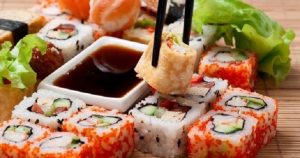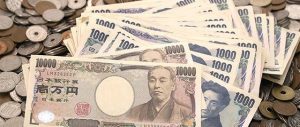Transportation and transportation in Japan
Transportation and transportation in Japan

Japan is known for its diverse, world-renowned, highly efficient, eco-friendly and consumer-friendly public transportation that is completely safe, convenient, and time-saving. It is distinguished by writing all information on it in both Japanese and English for everyone to understand. There are three types of public transportation, including the following:
trains:
It is the most convenient way to get around in Japan, as it is characterized by speed, efficiency and hygiene, as well as convenience. There are 5 types of them (local, express, express, limited express, and ultra-fast).
Subway:
Japan has a very efficient and completely safe subway network, found in large cities, to facilitate traffic between its prominent landmarks. It starts working from five in the morning until midnight. It has a reasonable price for everyone.
buses:
Buses are a simple form of public transportation in Japan, and you can buy tickets through bus reservation sites, with credit cards, or pay with cash.
There are many transportation etiquette in Japan that you must follow, including:
Don’t stop to look at your map in the middle of the path.
Eating is prohibited on the subway, but acceptable on shinkansen buses and highways, and dispose of garbage properly after eating.
Avoid talking loudly to your companion while in transit, as well as phones.
Make sure your IC card, ticket or pass is ready before heading to the ticket gates.

Food and drinks in Japan
food in japan
Japan is an island country, so seafood makes up the most delicious Japanese main dish. Japanese food is elegant, beautiful on the inside as well as on the outside
Sushi immediately comes to mind, a meal that has gained popularity all over the world. And it’s not the only Japanese delicacy, there are many wonderful traditional foods of Japan, including:
Donburi:
It is a delicious dish served in large bowls filled with rice, grilled or fried fish, meat or tofu, with soy sauce, broth, or spicy orange tikadon sauce.
sushi:
It is one of the most important dishes of Japanese cuisine, which she dedicated to the world. It is a hearty and delicious dish, where fresh fish is served with white rice, and the fillings vary from fish, meat, vegetables and seafood wrapped in seaweed.
Tempura:
They are vegetables or seafood that are fried in a light and crunchy batter. It’s not too greasy but it’s usually very tasty and delicious.
Tonkotsu Ramen:
It is a popular Japanese dish influenced by Chinese culture. It is a broth of beef and soybean or miso, served with soba noodles.
There are also many popular Japanese food inspired by Italian dishes, such as delicious pasta sauces mixed with crab, sea urchin and prawns.
And foods inspired by Korean dishes such as grills spread in all Japanese restaurants from skewers of meat and fish of various kinds, vegetables and kimchi.
You will live an exciting adventure inside Japanese restaurants, with what you see from the perfect arrangement of food, and some restaurants use iPads or food ordering machines with food arriving by conveyor belt.
Rice is your best friend in Japan, as it is essentially gluten-free. Be careful with sushi as rice can be mixed with vinegar made from barley. So track down a completely gluten-free Mecca restaurant in Tokyo, and take a Japanese restaurant translation card with you.
There are also many different Japanese drinks, the most important of which is (tea), as it is part of the Japanese culture, and this is clearly shown in the famous tea parties in Japan.

The official currency of Japan
The Japanese yen is the official and national currency of Japan, and is subdivided into 100 sen, or 1,000 rin.
Communications and the Internet in Japan
Japanese telecommunications companies are characterized by their development, progress, high efficiency, and modern technology. It is one of the best sectors around the world, providing unparalleled services to customers, and here are the most important communication companies in Japan:
SoftBank Mobile Company:
It is one of the giant companies in the field of world-renowned telecommunications. And it is constantly providing new services and introducing basic modifications in line with the country’s technological progress.
NEC Corporation:
It is a Japanese multinational IT company, and is one of the most important and best telecom companies in Japan.
NTT Corporation:
It is the largest telecommunications company in Asia, and dominates the telecommunications sector in Japan. As well as being the third largest telecommunications company in the world.
Willum Company:
Willum is distinguished by its large coverage of large areas of Japan, in addition to its continuous work to provide the best services to its customers always.
Sony Mobile Corporation:
It provides many services in the mobile phone production sector as well as mobile wireless communications, as it is one of the most important Japanese telecommunications companies.
Japan enjoys its remarkable development in all fields, especially in communications. You will not find any obstacle whatsoever in communicating with your relatives or friends during your vacation, and have the fastest internet completely.
The distance between the most popular cities in Japan
To move between the tourist cities of Japan, you need to know the distance between them, and the following are the distances between the most famous tourist cities in Japan:
Kumamoto to Kyoto 528 km 328 miles.
Tokyo to Hiroshima 676 km.
Tokyo to Fukushima 239 km.
From Tokyo to Kyoto 364 km.
Tokyo to Osaka 397 km.
From Tokyo to Fukuoka 883 km.
Osaka to Nara 28 km.
From Nara to Yokohama 360 km.
From Kanazawa-shi to Sendai-shi 419 km.
Kanazawa-shi to Wakayama Sh
j 294 km.
From Kanazawa-shi to Fukui-shi is 69 km.
Kanazawa-shi to Yamagata-shi 378 km.
Rent a car in Japan
Renting a car in Japan is an enjoyable experience on your trip, especially to explore the rural areas, and the various tourist areas comfortably. However, it is not recommended to rent a car to explore Japan’s major cities, as public transportation is best in urban areas. There are many conditions for renting a car in Japan, as well as general advice, the most important of which are:
You must be at least 18 years old.
Obtaining a Japanese driver’s license, or an International Driving Permit (IDP), to rent and drive a car. They must be obtained before you arrive in the country, as international driving permits are not issued in Japan.
Japanese driving on the left side of the road.
Choose reputable and high-trust car rental companies, and the most important of these companies are (Toyota_Nippon_Oryx_Times_Nissan_Acrin) for car rental, offering all types and sizes of cars, and they have an English online reservation.
The typical average rental fee is about 5,000 yen per day for a small-size car, 7,500 yen for a compact car, 10,000 yen for a mid-size car, 15,000 yen for a full-size car, and 20,000 yen for a compact car.
Snow tires are free in the snowy regions of Japan during the winter season.
Mandatory purchase of insurance that covers damage and injury. And the ability to purchase additional optional coverage for about $5 per day.
Use Google Maps to navigate, it is better than using GPS.
Drinking while driving is not tolerated at all in Japan, or else you will face severe legal penalties, including deportation.
Do not return the vehicle before the fuel tank is filled.
Read the car rental contract very carefully before you start booking.
Do not park the car in the middle of big cities, as it does not cost a lot, and park it in car parks designed like an elevator or in one of the towers, or through low barriers under cars.
